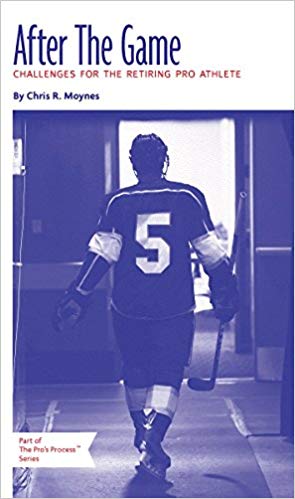 My latest MoneySense column looks at the seemingly enviable situation of professional athletes, and what us ordinary folk can learn about what it’s like to retire from a (typical) five-year career of earning big bucks, but then having a half century ahead of them. Click on the highlighted text to retrieve the full story: Why so many athletes run into financial trouble.
My latest MoneySense column looks at the seemingly enviable situation of professional athletes, and what us ordinary folk can learn about what it’s like to retire from a (typical) five-year career of earning big bucks, but then having a half century ahead of them. Click on the highlighted text to retrieve the full story: Why so many athletes run into financial trouble.
The article is based on an interview with Chris Moynes, a financial planner who specializes in managing money for NHL and other pro athletes, and reviews his book After the Game. it is available at Amazon.com or directly through his web site at www.onesports.ca, as is an earlier book called The Pro’s Process.
Most pro athlete careers average about 5.5 years. The median is just 4 years (so half have careers that last less than that) and of course a sudden critical injury could end it all at any moment. Of course, while it lasts the pay is astronomical compared to what mere mortals can generate in regular jobs: an average US$2.4 million per season. That means the average pro athlete will earn about $13 million over that short career. However, citing sportrac.com, Moynes says 200 of the 683 players in the NHL earn less than US$1 million per year, because the stats are skewed by the huge salaries of the biggest stars.
The 6 financial “Landmines” facing pro athletes
The opening chapter of After the Game outlines the six biggest “landmines” facing pro athletes. First is overspending and the combination of big paycheques spread over a short career. They seldom understand finances and often make poor investment choices, typically being prime targets for those selling “can’t miss” investments like nightclubs, casinos, real estate ventures and other private-equity type deals.
In short, they entrust their money management to the wrong people. And finally, many fall prey to “an almost predictable downward spiral” precipitated by the failure to avoid such landmines as gambling, trouble with the tax man, alimony payments and excessive leverage.
Obviously, there are lessons here for the vast majority of readers of this blog who have more traditional employment but my bet at this point is that if you harboured any lingering envy of the wealth and fame of pro athletes, you’re starting to feel a touch of sympathy now. As Moynes points out in a chapter comparing athletic career retirement and “civilian” retirement, most civilians eagerly look forward to the end of their long (often 30 or 40 years) careers, while most pro athletes and even elite amateur athletes wish their careers could go on indefinitely: “The thought of retirement is anathema to most pro athletes.”

